|
San Diego City and County Historic Designations
By Ann Jarmusch
July/August 2022
At the May 2022 meeting of the City of San Diego Historical Resources Board, HRB staff Suzanne Segur announced that on May 23, 2022, the City Council overturned the designation of the Streamline Moderne style structure named the Dr. Roy and Herma Ledford/Charles Salyers Building,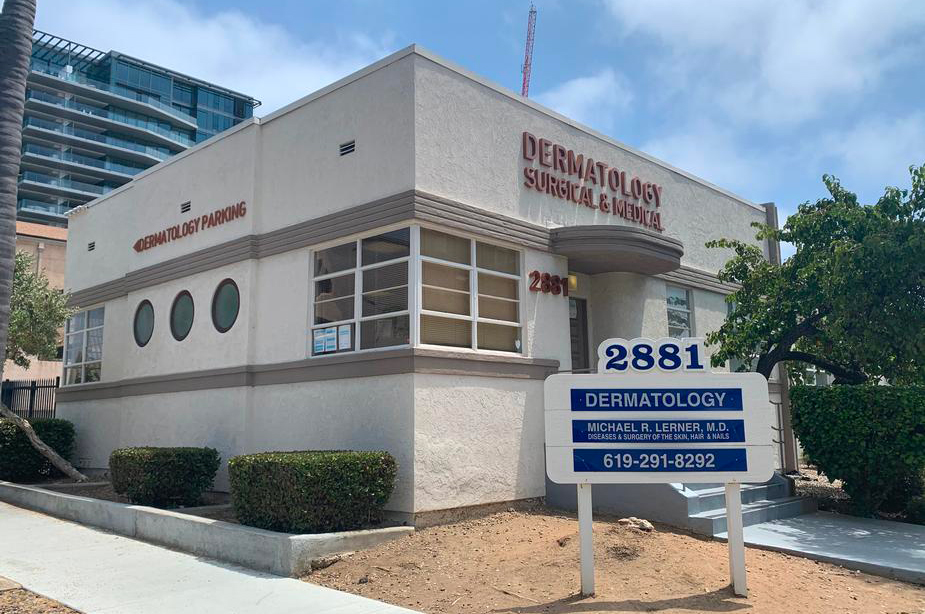 2851-2881 Fourth Avenue (top left), on the basis of new information. However, HRB staff's presentation to the council had explained that there were no grounds for overturning the designation. SOHO also stated there were no legal grounds. Pivoting, she noted that May is National Preservation Month and encouraged others to celebrate preservation. 2851-2881 Fourth Avenue (top left), on the basis of new information. However, HRB staff's presentation to the council had explained that there were no grounds for overturning the designation. SOHO also stated there were no legal grounds. Pivoting, she noted that May is National Preservation Month and encouraged others to celebrate preservation.
The HRB made recommendations to the Planning Commission on the Site Development Permit for the Klauber-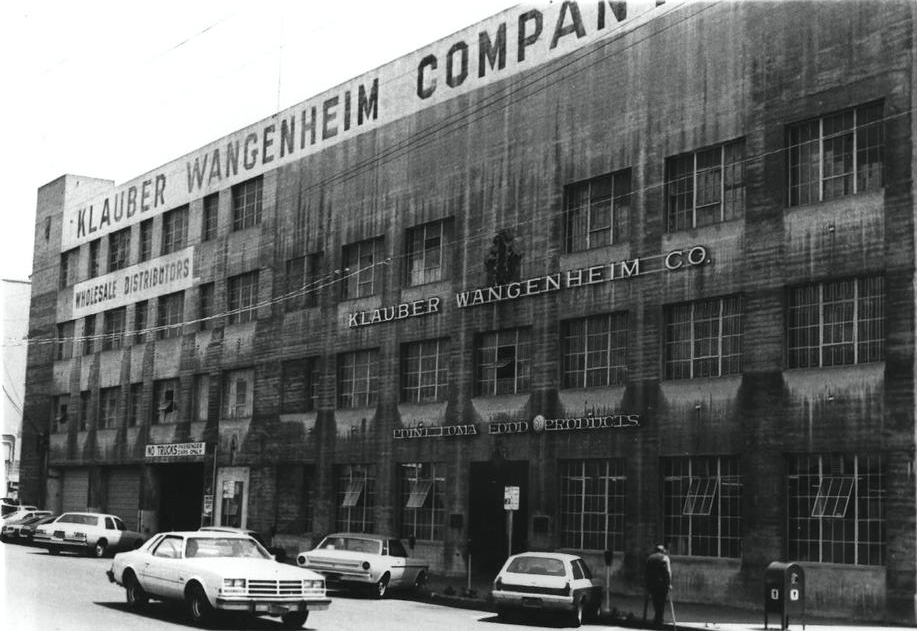 Wagenheim Building, a 1929 warehouse and designated resource downtown at 611 Island Avenue (bottom left). As mitigation measures, staff recommended HABS documentation, a treatment plan that follows the Secretary of the Interior’s Standards, and a monitoring plan pre- and during construction, which includes restoration and renovation of the warehouse exterior (and construction of a 37-story residential tower above it). The board unanimously added additional conditions: 1) The heavy timber members within the building are to be cataloged, deconstructed, and salvaged for reuse, preferably onsite; 2) a story board on the warehouse’s history is to be created and included in the first level lobby; and 3) if the project applicant chooses to replicate the painted historical signage, it will be reviewed by the HRB’s Design Assistance Subcommittee. Wagenheim Building, a 1929 warehouse and designated resource downtown at 611 Island Avenue (bottom left). As mitigation measures, staff recommended HABS documentation, a treatment plan that follows the Secretary of the Interior’s Standards, and a monitoring plan pre- and during construction, which includes restoration and renovation of the warehouse exterior (and construction of a 37-story residential tower above it). The board unanimously added additional conditions: 1) The heavy timber members within the building are to be cataloged, deconstructed, and salvaged for reuse, preferably onsite; 2) a story board on the warehouse’s history is to be created and included in the first level lobby; and 3) if the project applicant chooses to replicate the painted historical signage, it will be reviewed by the HRB’s Design Assistance Subcommittee. |
The board also designated three houses as historical resources. |
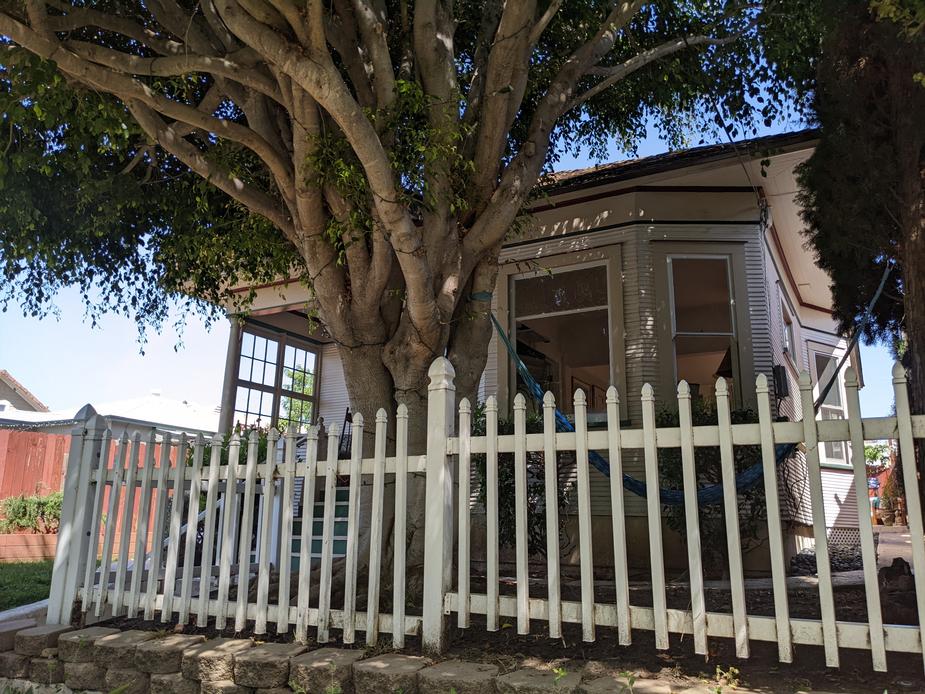 1086 Hayes Avenue, University Heights, is a 1908 Queen Anne Free Classic style home built for Jenny Alberta Wales. The one-story home is designated under Criterion C for exhibiting distinguished characteristics such as an asymmetrical facade, partial-width front porch with a classical column, horizontal wood siding, a hipped roof with lower cross gable roof form, a cross gabled pediment with a decorative vent; projecting bay windows; original wood fenestration, and a simple decorative wood frieze. The designation excludes the 1994 and 2006 rear additions. 1086 Hayes Avenue, University Heights, is a 1908 Queen Anne Free Classic style home built for Jenny Alberta Wales. The one-story home is designated under Criterion C for exhibiting distinguished characteristics such as an asymmetrical facade, partial-width front porch with a classical column, horizontal wood siding, a hipped roof with lower cross gable roof form, a cross gabled pediment with a decorative vent; projecting bay windows; original wood fenestration, and a simple decorative wood frieze. The designation excludes the 1994 and 2006 rear additions.
|
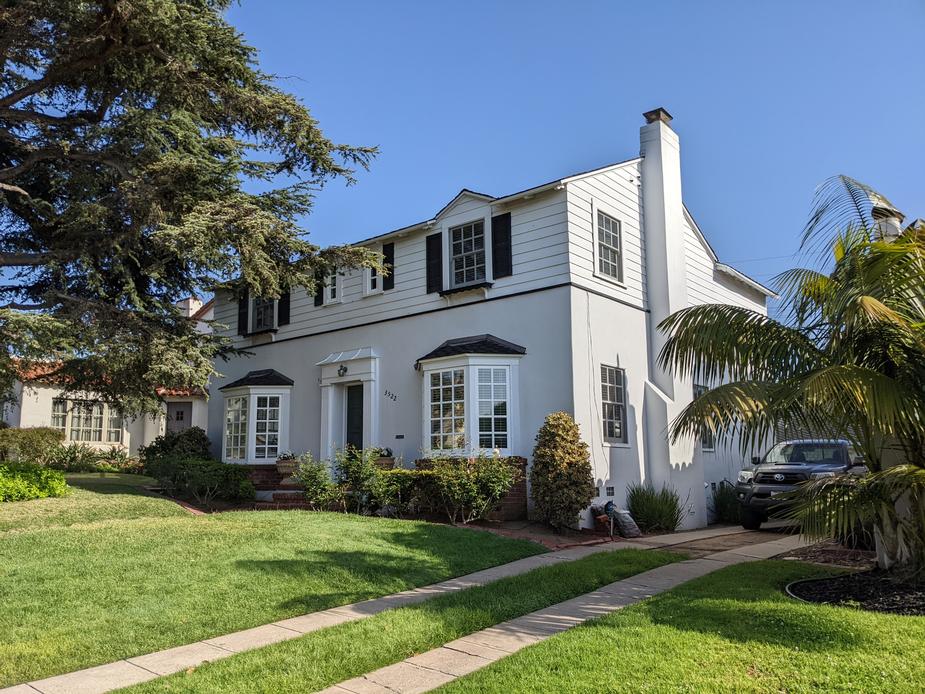 3522 Dumas Street, Loma Portal area of the Peninsula Community, was built in the Colonial Revival style for Verna Warner by the Master Builder A.L. and A.E. Dennstedt Building Company in 1937. The two-story home is designated under Criterion C for featuring Colonial Revival hallmarks such as a symmetrical primary facade with the paneled front door flanked by a pair of bay windows, side gable roof, gabled dormers, multi-light fixed and double-hung wood windows, and wooden shutters. It is also designated under Criterion D as a notable example of a Colonial Revival style residence by Master Builder A.L. and A.E Dennstedt Building Company. The designation excludes the 1960 rear two-story addition. 3522 Dumas Street, Loma Portal area of the Peninsula Community, was built in the Colonial Revival style for Verna Warner by the Master Builder A.L. and A.E. Dennstedt Building Company in 1937. The two-story home is designated under Criterion C for featuring Colonial Revival hallmarks such as a symmetrical primary facade with the paneled front door flanked by a pair of bay windows, side gable roof, gabled dormers, multi-light fixed and double-hung wood windows, and wooden shutters. It is also designated under Criterion D as a notable example of a Colonial Revival style residence by Master Builder A.L. and A.E Dennstedt Building Company. The designation excludes the 1960 rear two-story addition.
|
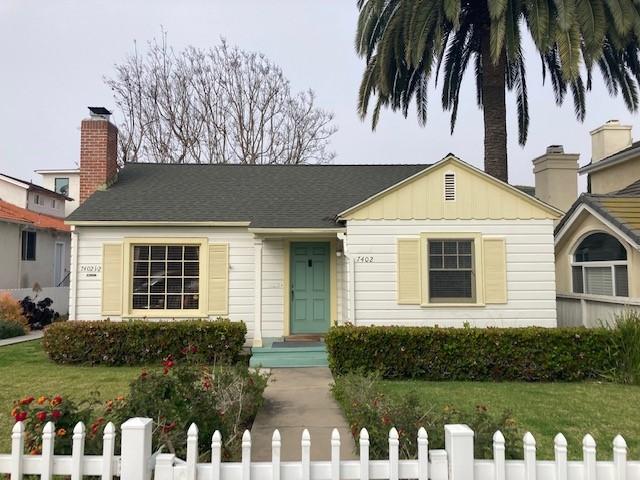 7402 Eads Avenue, La Jolla, was constructed in 1938 in the Minimal Traditional style, which, as one HRB member observed, is rarely represented among La Jolla landmarks; this house had not been identified in any historical surveys. The “gable-and-wing roof” design on the one-story Ervin and Ethel Jesse House exhibits front- and rear-projecting wings. The building is clad in channel rustic wood siding and has a 16-lite fixed picture window, a covered front porch with rounded steps, vertical scalloped-edge siding on a gable, and decorative louver shutters, some of which may have been added after construction (a key discussion point of the HRB). Minimal Traditional houses are usually modest in scale with simple architectural detailing, and may be clustered in 1940s neighborhoods or built as infill. 7402 Eads Avenue, La Jolla, was constructed in 1938 in the Minimal Traditional style, which, as one HRB member observed, is rarely represented among La Jolla landmarks; this house had not been identified in any historical surveys. The “gable-and-wing roof” design on the one-story Ervin and Ethel Jesse House exhibits front- and rear-projecting wings. The building is clad in channel rustic wood siding and has a 16-lite fixed picture window, a covered front porch with rounded steps, vertical scalloped-edge siding on a gable, and decorative louver shutters, some of which may have been added after construction (a key discussion point of the HRB). Minimal Traditional houses are usually modest in scale with simple architectural detailing, and may be clustered in 1940s neighborhoods or built as infill.
|
At the June 2022 meeting, the HRB designated four new resources, all houses. Like 7402 Eads Avenue described above, two newly designated houses in La Jolla had not previously been identified as potential historical landmarks until their current owners brought them to the board. |
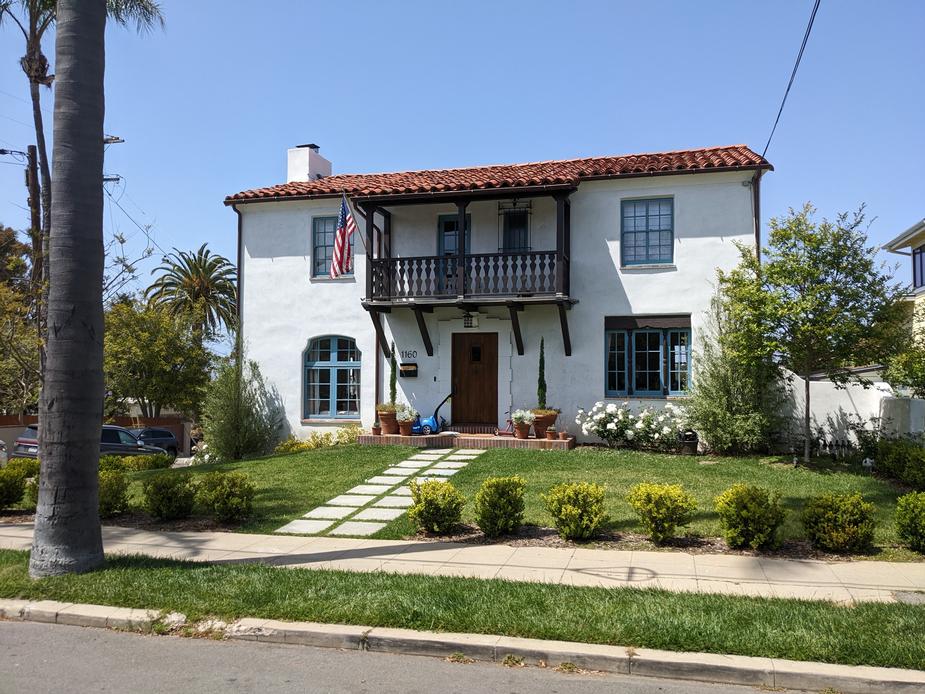 1160 Hunter Street, Mission Hills, was built in 1925 by Walter and Margaret Trepte in the Spanish Colonial Revival style with Monterey style influences. The two-story, stucco-clad home with a cantilevered wood balcony is designated under Criterion C, as it embodies these styles. The Spanish Colonial Revival style uses decorative details borrowed from the entire history of Spanish architecture. Its vocabulary is influenced by Moorish, Byzantine, Gothic, or Renaissance precedents. The Monterey style is one of California’s few indigenous architectural styles, and blended old Spanish characteristics with the architectural language of New England, which was brought to California in the early 20th century. The designation excludes a 2019 addition on the west elevation. (It is not designated as the home of San Diego builder Walter Trepte, because, according to the HRB, he is not a documented master builder.) 1160 Hunter Street, Mission Hills, was built in 1925 by Walter and Margaret Trepte in the Spanish Colonial Revival style with Monterey style influences. The two-story, stucco-clad home with a cantilevered wood balcony is designated under Criterion C, as it embodies these styles. The Spanish Colonial Revival style uses decorative details borrowed from the entire history of Spanish architecture. Its vocabulary is influenced by Moorish, Byzantine, Gothic, or Renaissance precedents. The Monterey style is one of California’s few indigenous architectural styles, and blended old Spanish characteristics with the architectural language of New England, which was brought to California in the early 20th century. The designation excludes a 2019 addition on the west elevation. (It is not designated as the home of San Diego builder Walter Trepte, because, according to the HRB, he is not a documented master builder.)
|
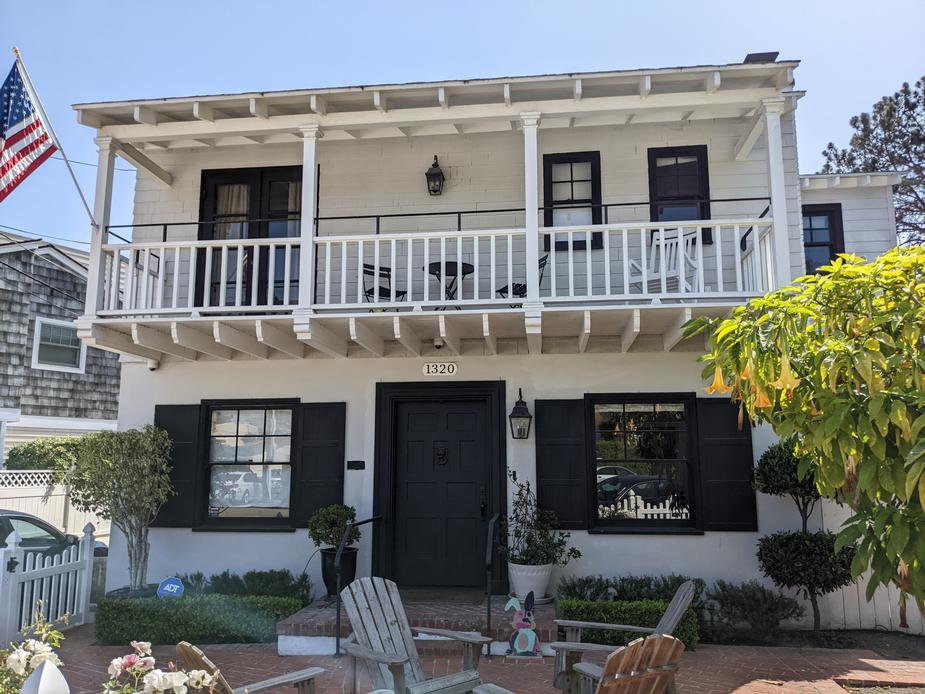 1320 Park Row, La Jolla, is a two-story Monterey style house built for Mary Lynch in 1933. It is designated under Criterion C for its distinctive representation of the style and Criterion D, as the work of Master Architect Frank Hope, Sr. The primary facade features the style’s signature cantilevered second-story balcony with a wood railing that runs the full length of the elevation. Balcony access is through French doors. A side gable roof covers the main massing of the house and extends to cover the balcony. Stucco clads the first-floor exterior, while the upper story has wood shingle siding. The paneled front door occupies the center of the front facade and is flanked by two double-hung, multi-light wood windows with faux shutters. Other elements include a masonry chimney and a bay window clad in masonry veneer. The designation excludes the rear 1972 and 2014 additions and the side addition built in 1996. 1320 Park Row, La Jolla, is a two-story Monterey style house built for Mary Lynch in 1933. It is designated under Criterion C for its distinctive representation of the style and Criterion D, as the work of Master Architect Frank Hope, Sr. The primary facade features the style’s signature cantilevered second-story balcony with a wood railing that runs the full length of the elevation. Balcony access is through French doors. A side gable roof covers the main massing of the house and extends to cover the balcony. Stucco clads the first-floor exterior, while the upper story has wood shingle siding. The paneled front door occupies the center of the front facade and is flanked by two double-hung, multi-light wood windows with faux shutters. Other elements include a masonry chimney and a bay window clad in masonry veneer. The designation excludes the rear 1972 and 2014 additions and the side addition built in 1996.
|
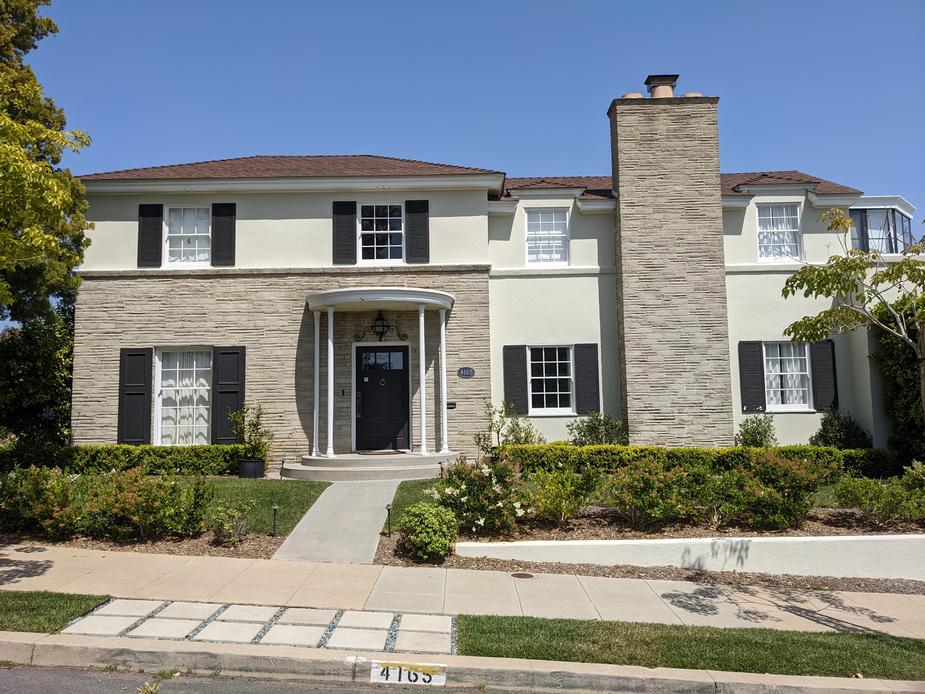 4165 Miller Street, Mission Hills, is a Colonial Style home built in 1946. The Timothy and Thelma Perkins/Ralph L. Frank House is designated under Criterion C for demonstrating characteristics of the style and under Criterion D as a notable example of the work of Master Architect Ralph L. Frank, who designed it in his signature style at the height of his career. Characteristics of Colonial Revival style include a symmetrical front facade, rounded entry portico with classical columns, combination hipped and gable roof, stone veneer and stucco exterior, belt course, stone veneer chimney, bay windows, multi-lite wood frame double-hung windows, wall dormers, and decorative shutters. The home is a contributor to the Inspiration Heights Historic District, which is listed on the National Register. The designation excludes the 2018 second story addition and rear porch enclosure. 4165 Miller Street, Mission Hills, is a Colonial Style home built in 1946. The Timothy and Thelma Perkins/Ralph L. Frank House is designated under Criterion C for demonstrating characteristics of the style and under Criterion D as a notable example of the work of Master Architect Ralph L. Frank, who designed it in his signature style at the height of his career. Characteristics of Colonial Revival style include a symmetrical front facade, rounded entry portico with classical columns, combination hipped and gable roof, stone veneer and stucco exterior, belt course, stone veneer chimney, bay windows, multi-lite wood frame double-hung windows, wall dormers, and decorative shutters. The home is a contributor to the Inspiration Heights Historic District, which is listed on the National Register. The designation excludes the 2018 second story addition and rear porch enclosure.
|
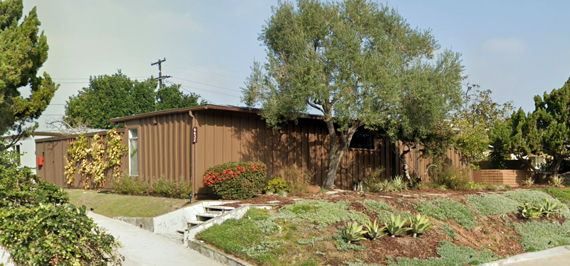 6632 Avenida Manana, La Jolla, is a single-story Contemporary style home with a period of significance of 1956-59. The Ellis and Nancy Barron House exhibits character-defining features that resulted in designation under Criterion C, including a partially enclosed court, large aluminum-framed windows and louvered glazing, floor-to-ceiling glass, vertical wood siding, board-and-batten siding, exposed ceiling joists, and strong interior/exterior connections embodied in the courtyard pergola-like shade structure with horizontal slats. Photo courtesy Google maps 6632 Avenida Manana, La Jolla, is a single-story Contemporary style home with a period of significance of 1956-59. The Ellis and Nancy Barron House exhibits character-defining features that resulted in designation under Criterion C, including a partially enclosed court, large aluminum-framed windows and louvered glazing, floor-to-ceiling glass, vertical wood siding, board-and-batten siding, exposed ceiling joists, and strong interior/exterior connections embodied in the courtyard pergola-like shade structure with horizontal slats. Photo courtesy Google maps
|
All photos are from the California Historical Resources Inventory Database (CHRID), except where noted otherwise. The above designations were reviewed and approved by the City of San Diego Historical Resources Board (HRB) or the County of San Diego Historic Site Board (HSB).
|
2025
2024
2023
2022
2021
2020
2019
2018
2017
2016
2015
|












